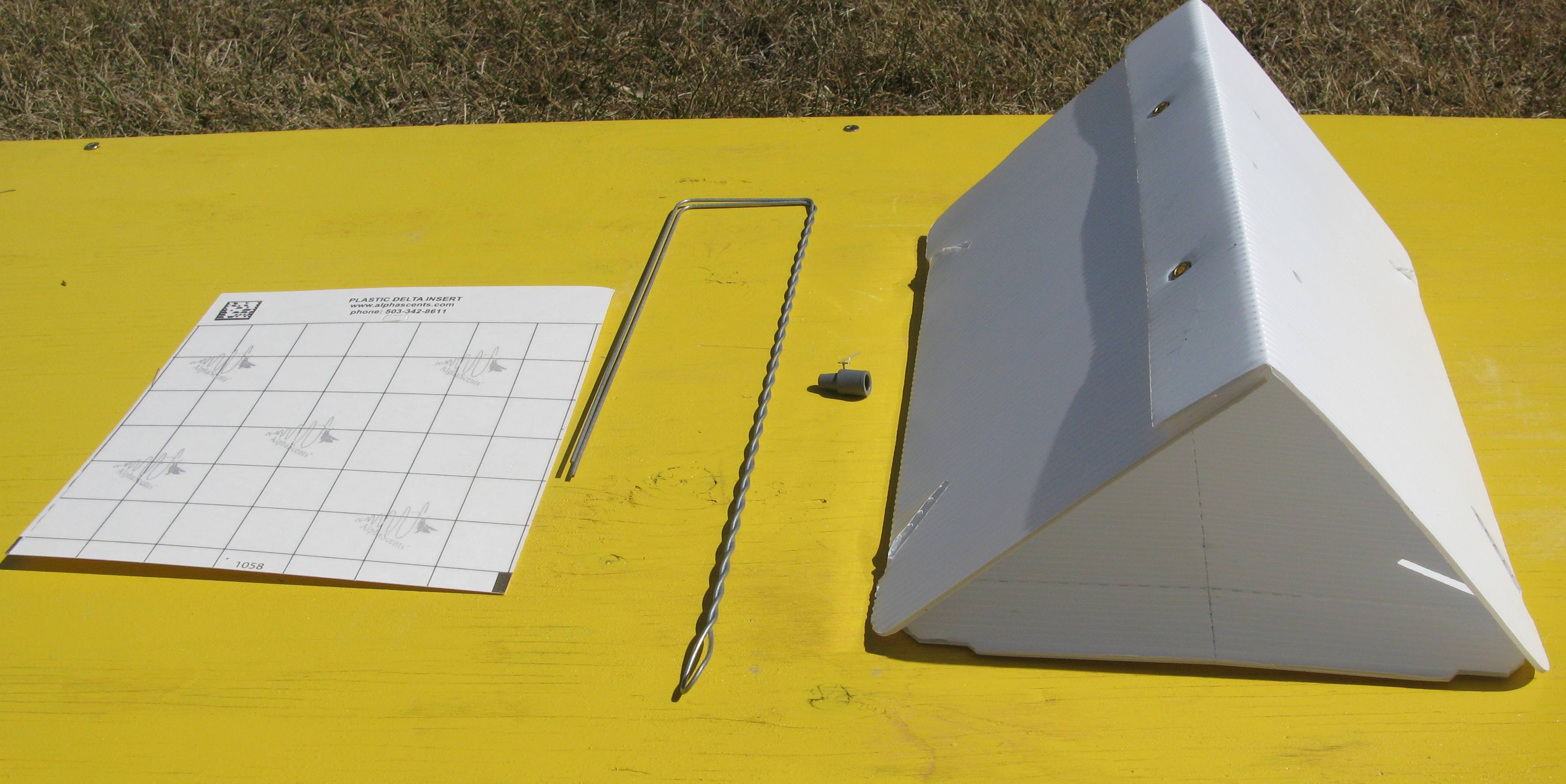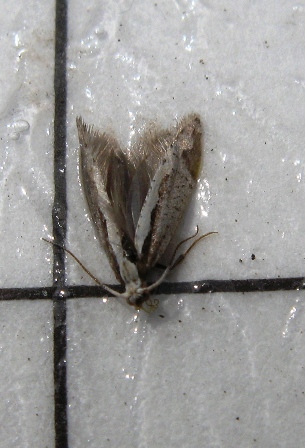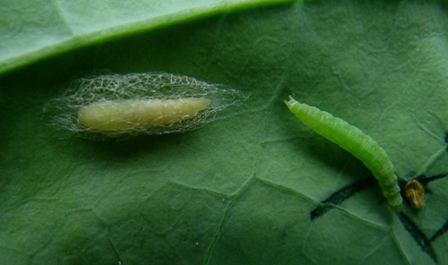Diamondback Moth Monitoring Program in Manitoba - 2022
Diamondback moth does not overwinter well in the Canadian prairie provinces, but large numbers can potentially blow in. If conditions are favorable for their survival and reproduction when they arrive, and if natural enemies do not limit population establishment, populations can increase.
Pheromone-baited traps (Fig. 1), which attract the male moths, are established for a 6-8 week period from early-May until late-June to detect the arrival of populations of diamondback moth early in the season. The cumulative counts from the traps can not predict what levels of larvae will be, but can be used to determine regions of the province where increased attention for diamondback moth is recommended when scouting fields.


Fig. 1. Trap for diamondback moth Fig. 2. Diamondback moth on insert of trap
Summary (as of July 2, 2022)
- Trap counts were generally low until mid-May. After that some moderate to high counts occurred in traps in the Eastern and Central regions. Counts were generally low in Western Manitoba, with the first counts over 10 happening the week of June 19-25.
- Diamondback moths were caught in 41 of the 51 traps, with 19 of these being cumulative counts of greater than 10.
The highest cumulative trap count was 287 from a trap near Whitemouth in the Eastern region. In spite of some strong winds from the South, a lot of traps still had low numbers, but there were some areas in the Eastern and Central regions where prioritizing looking for larvae while crop scouting was advised.
Table 1. Highest cumulative trap counts per agricultural region in Manitoba over the trapping period (May 1 to July 2, 2022)
| Location | Count |
| Northwest | |
| Grandview | 29 |
| Grandview | 27 |
| Shortdale | 13 |
| Grandview | 6 |
| Southwest | |
| Rossburn | 24 |
| Miniota | 20 |
| Rivers | 13 |
| Central | |
| Altona | 133 |
| Gnadenfeld | 111 |
| Halbstadt | 53 |
| Carman | 38 |
| Belmont | 20 |
| Eastern | |
| Whitemouth | 287 |
| Hadashville | 270 |
| Beausejour | 224 |
| Stead | 220 |
| Ste. Anne | 62 |
| Interlake | |
| Arborg | 15 |
| Arborg | 5 |
Guidelines for monitoring larvae of diamondback moth can be found at: http://www.gov.mb.ca/agriculture/crops/insects/diamondback-moth.html

Fig. 3. Diamondback moth pupa (left) and larva (right).

